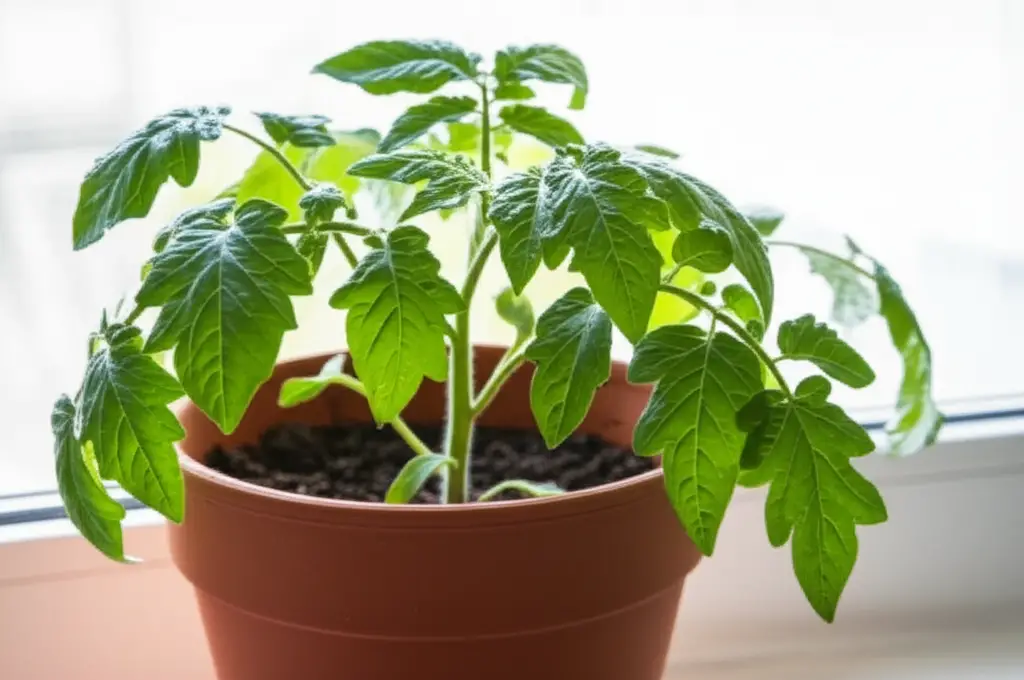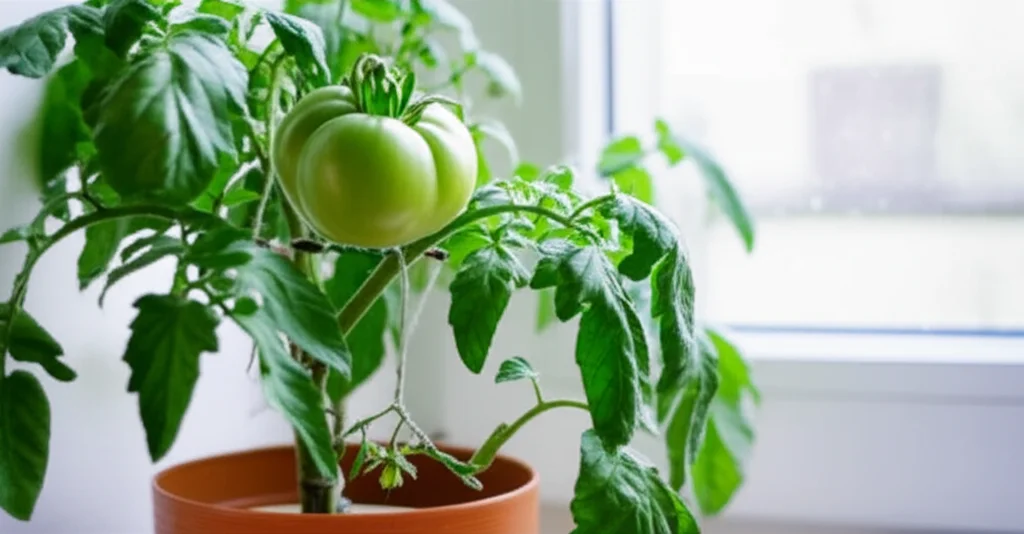Learn how to overwinter your prized tomato plants to enjoy an early harvest next season. This guide provides simple, effective techniques for successful overwintering, whether you have a greenhouse, a sunny window, or just a basement.

Extending the life of your tomato plants beyond the first frost can be rewarding. Overwintering allows you to get a head start on the next growing season and enjoy fresh, homegrown tomatoes earlier than ever. This comprehensive guide will walk you through various methods of overwintering tomato plants, tailored to different climates and resources.
JUMP TO TOPIC
Choosing the Right Overwintering Method
The best method for overwintering your tomato plants depends on your climate and available resources. Consider the following options:
Bringing Plants Indoors
Sunny Windowsill Method: This simple method is ideal for smaller tomato plants. Choose a south-facing window (or the sunniest location available) to provide ample sunlight. [Link to internal post: Growing Tomatoes Indoors]
Greenhouse Overwintering: If you have a greenhouse, it provides the ideal environment for overwintering. The controlled temperature and humidity help maintain healthy growth throughout the winter months. [Link to internal post: Greenhouse Gardening Tips]
Basement Overwintering: Overwintering in a cool, dry basement is a viable option for hardened-off tomato plants. While they may go dormant during the winter, they will be ready to awaken in spring.
Rootball Overwintering
Dig and Store: A traditional method involves digging up the entire tomato plant, carefully preserving the root ball, and storing it in a cool, dark, and frost-free location like a basement or garage until the next growing season. [Link to external source: University Extension article on rootball storage for perennials]
Cutting Overwintering
Taking Cuttings: Propagating new tomato plants from cuttings taken before the first frost is a simple and effective method. These cuttings can be rooted indoors and grown under grow lights until spring. [Link to internal post: Plant Propagation Techniques]
Preparing Your Tomato Plants for Overwintering
Before implementing your chosen overwintering method, there are several crucial preparatory steps:
Inspect for Pests and Diseases: Carefully inspect your tomato plants for any signs of pests or diseases. Treat any existing issues before bringing them indoors or storing them to prevent spread. [Link to external source: Identifying common tomato pests]
Pruning: Remove any dead, damaged, or diseased leaves and branches. Trimming the plants also makes them more manageable for indoor spaces or storage.
Hardening Off Plants: Gradually acclimate your tomato plants to lower temperatures and reduced sunlight by placing them outdoors for a few hours each day, increasing the duration gradually. This hardening-off process prepares them for the transition to indoor or storage conditions.
Caring for Overwintered Tomato Plants
Proper care during the overwintering period is essential for healthy plants in the spring:
Watering: Overwintered tomato plants need less frequent watering than during the active growing season. Water sparingly, ensuring the soil dries out between waterings to prevent root rot.
Light: Provide adequate light to prevent leggy growth, especially for plants overwintered indoors. Supplement natural light with grow lights if necessary. [Link to internal post: Choosing the Right Grow Lights]
Temperature: Maintain a consistent temperature according to your chosen overwintering method. Cooler temperatures are appropriate for dormant plants in storage, while slightly warmer temperatures are necessary for actively growing plants indoors.
Fertilizing: Generally, you don’t need to fertilize dormant plants. However, for actively growing plants indoors, use a balanced fertilizer at a reduced strength every 4-6 weeks. [Link to external source: Choosing the right fertilizer for tomatoes]
Waking Up Your Overwintered Tomatoes
As spring approaches, it’s time to wake up your dormant plants and prepare them for the new growing season:
Gradual Acclimation: Gradually reintroduce your overwintered tomato plants to outdoor conditions by placing them outside for increasing periods each day. This helps prevent transplant shock.
Repotting (If Needed): Check the root system of your overwintered plant and repot it into a larger container with fresh potting mix if necessary.
Pruning: Prune any dead or weak growth to encourage new, healthy growth.
FAQs: Overwintering Tomato Plants
Can I overwinter any variety of tomato plant? While most tomato varieties can be overwintered, indeterminate varieties are generally better suited for this because they continue to grow throughout the season.
What are the signs of a diseased tomato plant? Look for wilting leaves, yellowing foliage, dark spots on the leaves or stems, and any unusual growth.
When is the best time to take cuttings for overwintering? Take cuttings a few weeks before the first expected frost to allow enough time for rooting.
How often should I water overwintered tomato plants in the basement? Water only when the soil is completely dry, usually once every few weeks or even less.
What temperature should I maintain in my greenhouse for overwintering tomato plants? Ideally, maintain a temperature between 50-60°F (10-15°C).
Conclusion
Overwintering tomato plants can be a rewarding way to extend your growing season and enjoy an earlier harvest next year. By choosing the right method and providing proper care during the winter months, you can successfully overwinter your favorite tomato varieties and enjoy fresh, homegrown tomatoes sooner than you thought possible. Remember to adapt these tips to your specific climate and growing conditions. Happy gardening!

